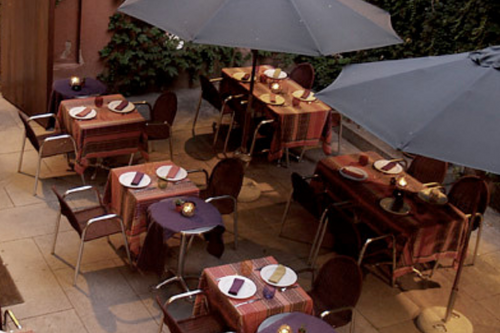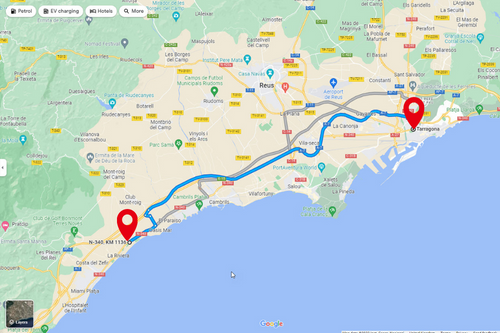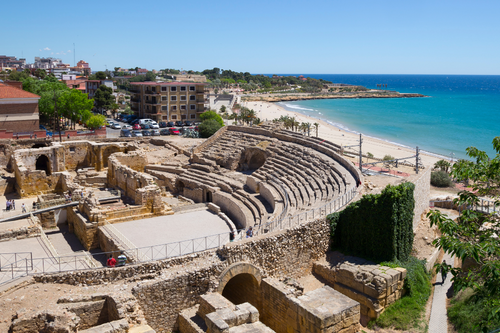Visit Tarragona
Tarragona is a coastal city located in the northeast of the country. It's known for its historical monuments and its beaches, which make it a popular tourist destination. The old city centre is filled with Roman ruins, including a well-preserved amphitheatre and an aqueduct. There are also several medieval churches and a castle. Tarragona's beaches are long and wide, with crystal-clear water. Visitors can enjoy plenty of activities here, such as swimming, sunbathing, windsurfing, and diving.
Easy distance to La Torre Del Sol campsite
If you are staying at our La Torre Del Sol Campsite in Costa Dorada, you are within easy reach of one of Spain's most historic towns.
It takes less than half an hour by car to get from the La Torre Dell Sol Campsite in Costa Dorada to Tarragona. You can make a day of it, maybe visiting the historic amphitheatre and the aqueduct in the morning and relaxing on the beach in the afternoon.
A day out in Tarragona
 Take a picnic or explore one of the local restaurants for lunch or dinner.
Take a picnic or explore one of the local restaurants for lunch or dinner.
The Barhaus is one of the most popular restaurants in Tarragona. Visitors compliment the food, and the staff, frequently stating that the visit 'was a great experience.
The Da Mario claims the 'best pizza in Spain';. Be sure to check that out if you're a pizza fan. Most restaurants in the area have outside seating and cater for children.
Tarragona - Sightseeing
A highlight of your visit to one of our Spanish campsites in the Catalonia region. This open, airy and inviting city contains some of the best Roman remains in Spain. Its hilltop location has served it well throughout a troubled past of attacks, and within its walls, Roman ruins, including parts of a chariot racetrack and a seaside amphitheatre, pay testament to a city that was once held to be the most elegant in all imperial Spain. The earliest documented evidence of the city dates back to the sixth or seventh century BC, although it was established as the imperial Roman stronghold of Tarraco in 218 BC. The first century of the Christian era saw the construction of temples, mansions, a forum, a circus, an amphitheatre, aqueducts and thermal baths. But the invasion of the Visigoth army in AD 476 marked the end of Roman influence.
A divided city
The city divides into two distinct areas: the upper section, which leads into the old medieval walled quarter, and a more modern area below. Rambla Nova, a tree-lined walkway surrounded by café bars and restaurants, is at the heart of the upper town. It leads to the Balcó del Mediterrani, a lookout point facing the sea. From the adjoining Passeig de Les Palmers, you can see the Roman amphitheatre, with original second-century AD terraces that back onto the Mediterranean. At the opposite end of Rambla Nova is a monument dedicated to Catalonia's Castellers, who built human pyramids.
Rambla Vella
Parallel to Rambla Nova is Rambla Vella, from which you can explore the tightly woven streets of the old town as they climb to the cathedral. On the edge of the old quarter, at Plaça del Rei, is the Museu Nacional Arqueológic, with a well-preserved section of the Roman walls. Nearby, the remains of the Circ Roma chariot stadium give an insight into the city's past. From the walls, the city's greatest defence, walk along the Passeig Arqueològic for an excellent overall view of the city. Across town is the ancient necropolis, while the Museu i Necròpolis Paleocristians reveals more ruins.
When Mass is held, access to the cathedral and its Museu Diocesà is through the cloisters, signposted down what appears to be a back alley. If you stand with the façade in front of you, the signpost points to the left.
Tarragona is within easy reach of La Torre Del Sol resorts.



